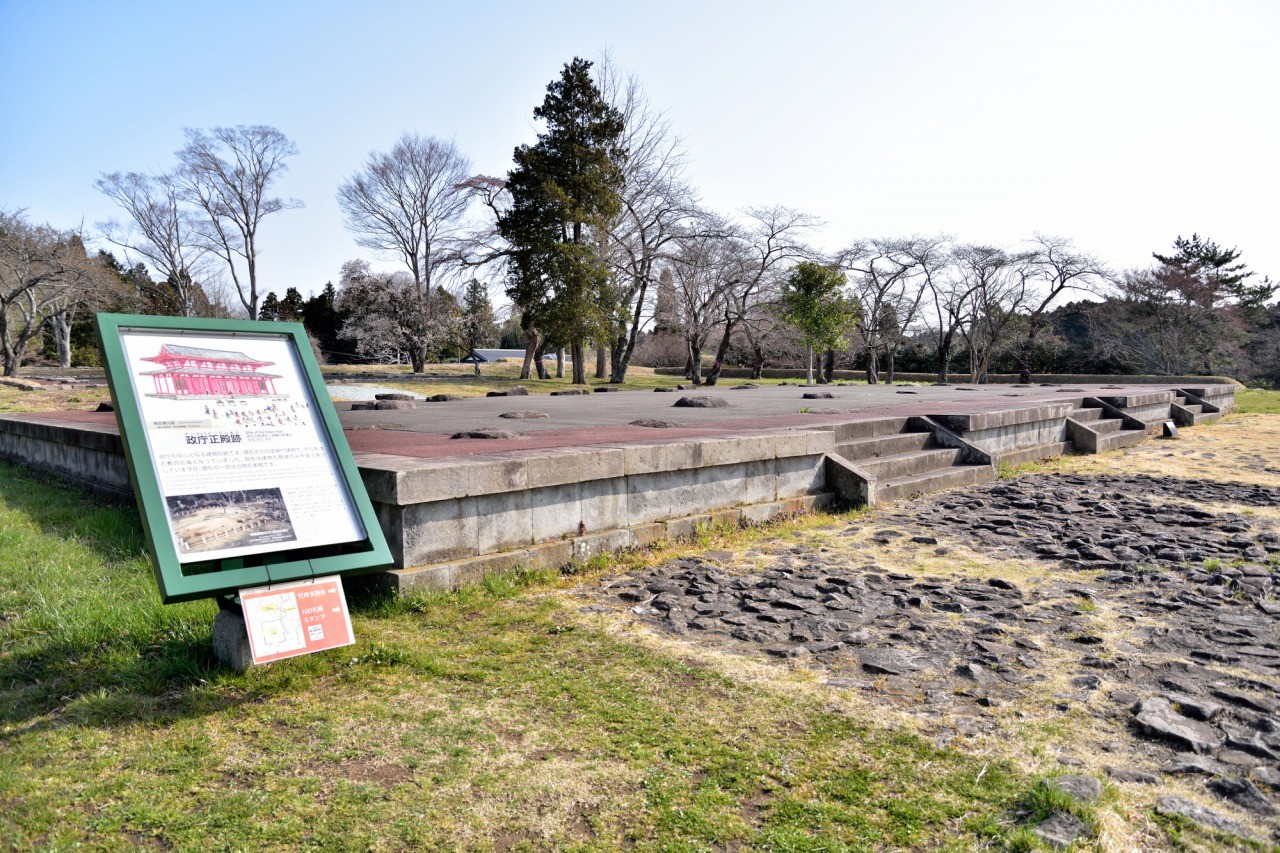Taga Castle Ruins
One of the three great historic ruins of Japan and one of the country's top 100 castle sites

Together with the Heijo-kyo city ruins in Nara Prefecture and the remains of Dazaifu fortress in Fukuoka Prefecture, Taga Castle ruins are considered one of the three major architectural sites of Japan. Although no buildings remain today, Taga Castle was once the site for the government administration of Mutsu Province in the Nara and Heian eras and during the Nara era it was also home to military installations. The castle is said to have been constructed in 724 by a man named Ono-no-Azumahito, and until its destruction in the mid-11th century it played a central role in the politics, culture and military affairs of ancient Tohoku.
The remains of this ancient administrative centre are centrally located in Tagajo, and encompass an area of 103m east to west, and 116m north to south, and it was an important place for administrative affairs and other rituals. The cherry trees dotted among the ruins bloom beautifully in spring and this is known as a hidden cherry blossom viewing spot.
The remains of this ancient administrative centre are centrally located in Tagajo, and encompass an area of 103m east to west, and 116m north to south, and it was an important place for administrative affairs and other rituals. The cherry trees dotted among the ruins bloom beautifully in spring and this is known as a hidden cherry blossom viewing spot.
- Address
- 宮城県多賀城市市川城前
- Telephone Number
- 022-364-5901
- Opening Times
- Prices
- Free (Visitors are free to walk around the site)
- Duration
- Notes